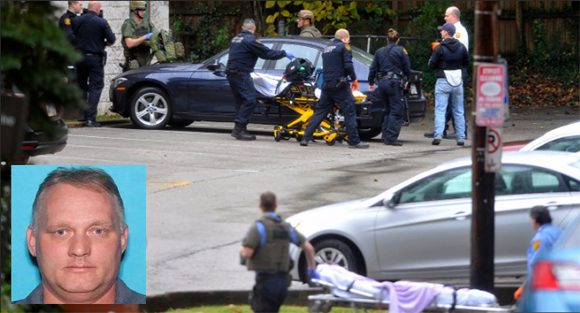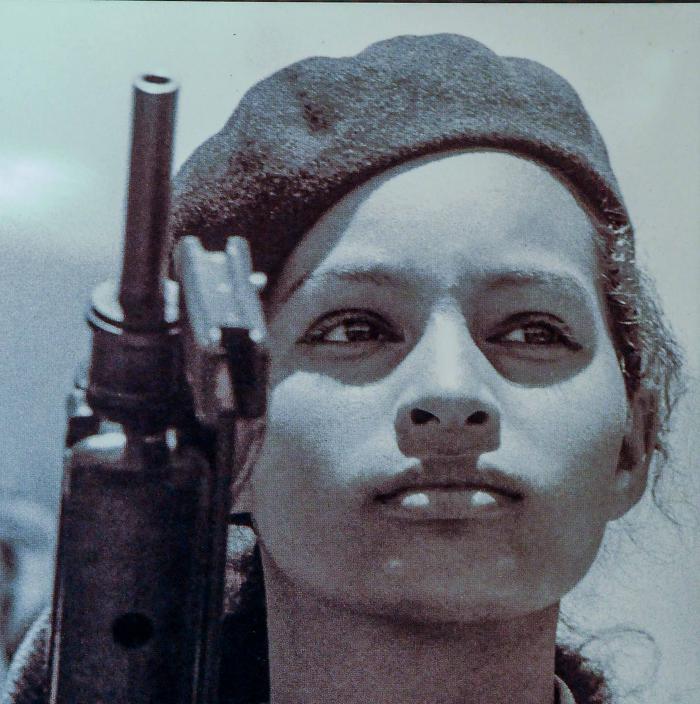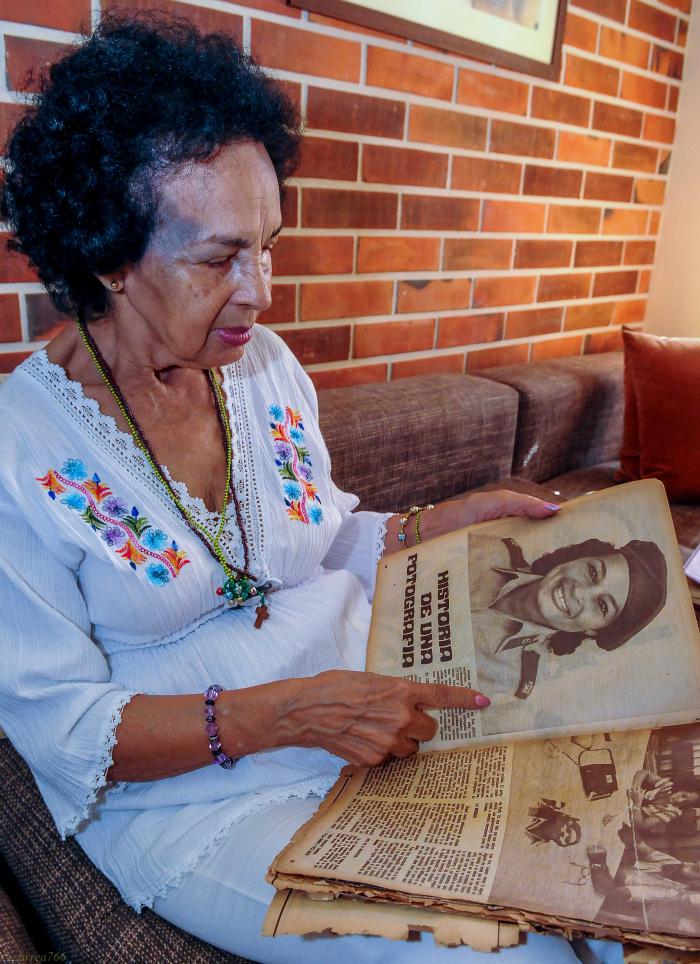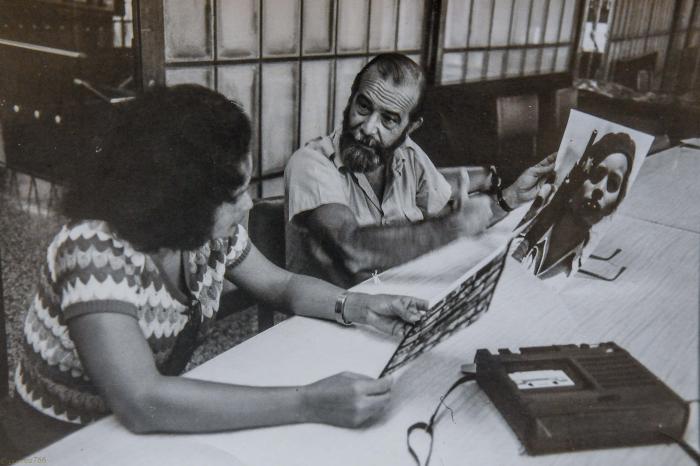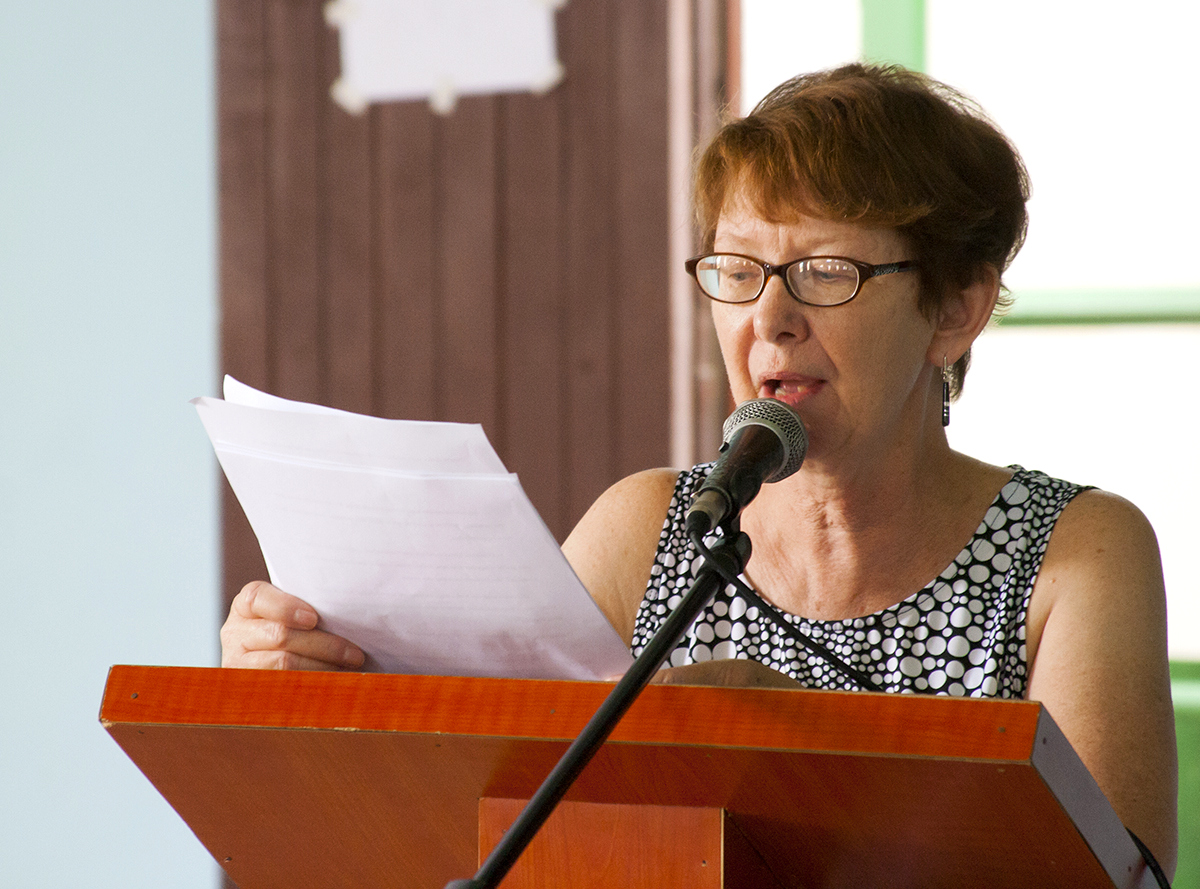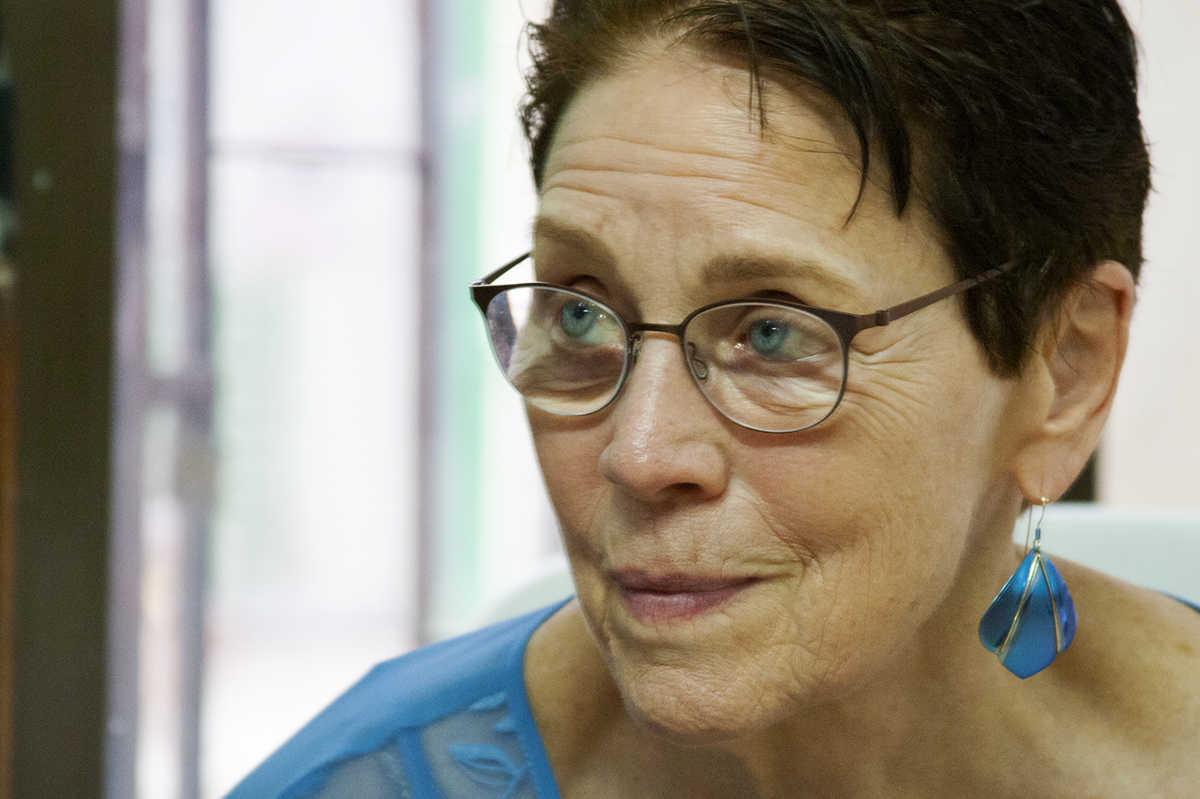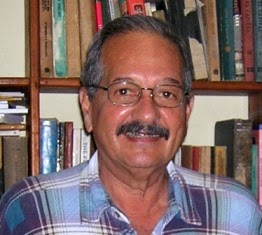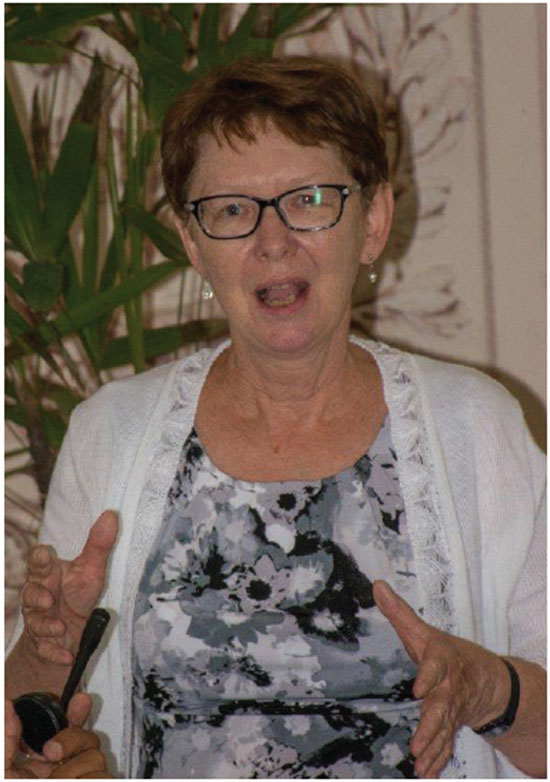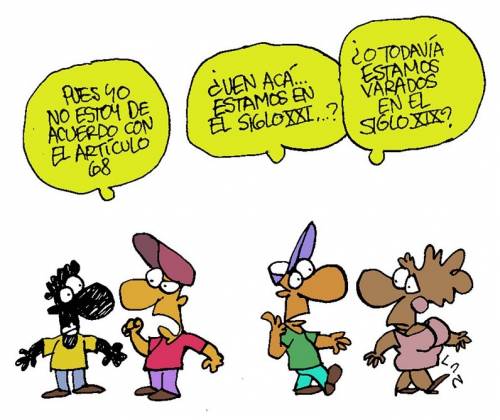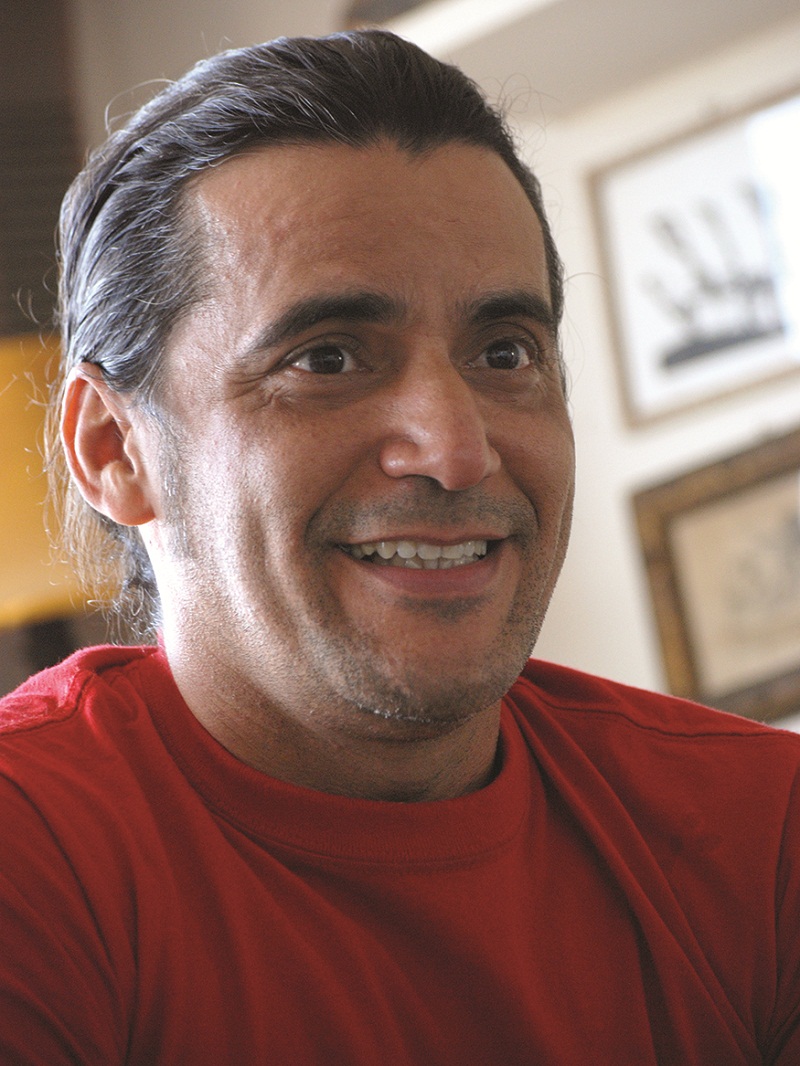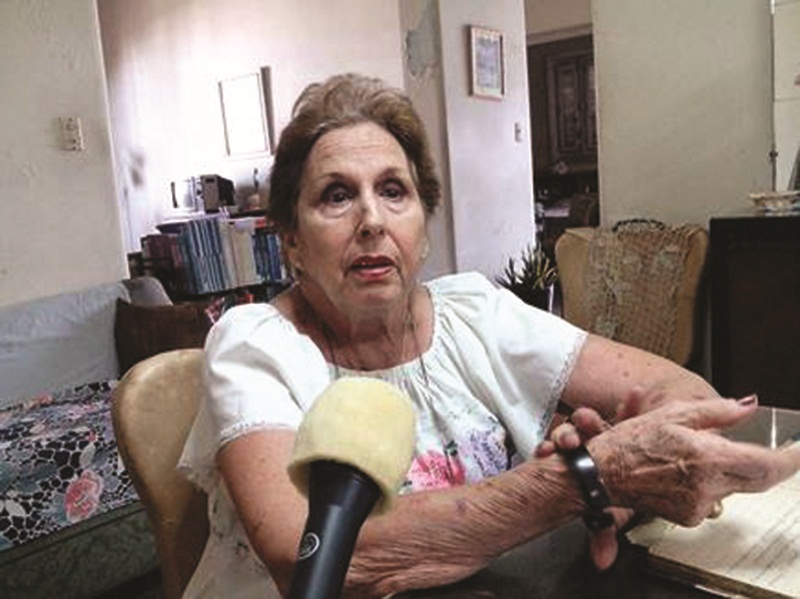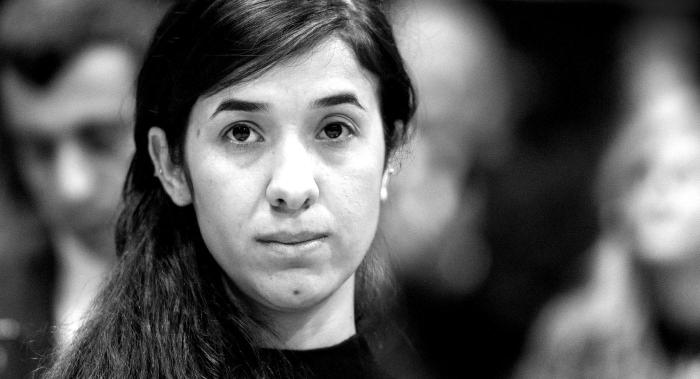Translations 677
Pittsburgh synagogue shooter’s racist messages

Pittsburgh synagogue shooter posted racist messages on social networks
October 28, 2018
Translated and edited by Walter Lippmann for CubaNews.
“HIAS liked to bring invaders who kill our people. I can’t sit back and watch my people get killed. Screw your views, I’m going in,” Robert D. Bowers posted on the Internet Saturday, shortly before breaking into a Pittsburgh synagogue and shooting 11 people in an action that UN Secretary-General Antonio Guterres said is “a painful reminder of the persistence of anti-Semitism.
HIAS is a nonprofit Jewish refugee support organization, which after the massacre recalled that it is dedicated to the “rescue of people whose lives are in danger because of who they are.
Bowers almost announced his intentions days in advance, if you look at many of his social networking publications, in which he called immigrants “invaders,” distributed racist memes and claimed that Jews were the “enemy of whites.”
Bowers used Gab, an ultra-right social network taken as an alternative to Twitter that is heavily funded and favored by white supremacists, presented as “the free speech social network.” and riddled with neo-Nazi messages.
The attack left 11 dead in the Tree of Life synagogue, known for keeping a copy of the Torah rescued from the Holocaust.
The Sabbath ran and in the synagogue, located in the Squirrel Hill neighborhood, several religious ceremonies were held in different rooms, including a baptismal hall. In that context, Bowers perpetrated one of the worst attacks against the Jewish community in U.S. history, firing and shouting “All Jews must die!”
In a message condemning Saturday night’s crime in Pittsburgh, [UN Secretary General António] Guterres called on the authorities, civil society, religious and community leaders, and the general public to form a “common front” that would reverse the racist, anti-Semitic, Islamophobic, or other forms of hate such as intolerance, discrimination, and xenophobia that are gaining strength in many parts of the world.
This is in a country where immigration has become the subject of election campaigns and a way of instilling fear in voters. According to a Reuters analysis of the propaganda broadcast through October 15, 20% of the Republican Party’s ads in the congressional elections have mentioned immigration.

“All of us, in fact, are wounded by this inhuman act of violence,” said [Pope ]Francisco, who expressed his closeness to all the people of Pittsburgh “and in particular to the Jewish community, affected by a terrible attack on the synagogue.
Robert Bowers, 46, of Pittsburgh, was arrested after exchanging fire with a SWAT team. The prosecutor’s office charges him with 29 criminal charges, including crimes of violence and firearms, and violating U.S. civil rights laws.
Bowers had 21 guns registered in his name, according to authorities. Police reported that he only had one traffic violation on his record in 2015.
A few days ago, Cesar Sayoc was arrested in Florida, accused of sending parcel bombs to prominent Democratic personalities and politicians. Sayoc also posted hate messages on social networks.
(Information from agencies.)
Falls Can and Should be Prevented

ALL ABOUT HEALTH
Falls Can and Should be Prevented
Falling is a geriatric syndrome, a disease; when it becomes recurrent it is clearly giving alarm signals that must be paid attent to.
Author: Lisandra Fariñas Acosta | lisandra@granma.cu
October 28, 2018 20:10:34
A CubaNews translation.
Edited by Walter Lippmann.
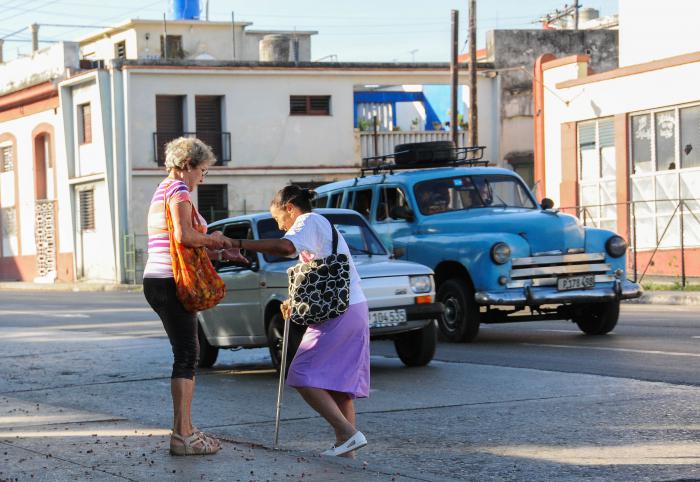
As we age we must adapt to the environment, which is often a challenge for the performance of activities of daily living, crossing streets, transportation, ant the footwear that is used, can cause of fractures on numerous occasions. Photo: Juvenal Balán
“It took human beings about five million years to learn to walk and only 70 years to fall. This, which humorously may be interesting, should not really be allowed, because falling is not a habitual state. Falling is a geriatric syndrome, a disease. In other words, not everyone falls, because there are people who reach the age of 90 without having suffered any event of this type.
This was explained to Granma by the doctor of the Argentine Association of Orthopedics and Traumatology and member of AO Trauma, Emilio Fantin. He emphasized the need to prevent falls in the elderly, an aspect that is not often thought of. For the expert, it is important not only to know what a fall is, but also to understand why we fall and to evaluate the old person who falls.
Participating in the Seminar AO Trauma “Traumatology in the Elderly”, which was held in recent days in the teaching Fructuoso Rodriguez orthopedic hospital, and included recognized experts from this organization, Dr. Fantin commented that if we take into account that 1 to 5% of falls end in fracture and almost all hip fractures are secondary to them, it is vital to talk about this issue.
After a hip fracture, between 20 and 50% of older people fall again within two to six months of the first fall, so that prevention is once again the key. It happens that of those who fall for the second time, approximately 12% have a new fracture and 5% a hip fracture.
According to the World Health Organization (WHO), there are a thousand hip fractures per million inhabitants. If this figure is taken to the aging population, it is considered that a thousand fractures occur for every 100,000 people over 60 years of age, which would correspond to 10% of this age group.
It is estimated that around 12,000 of these fractures occur annually in Cuba, with resulting costs that they imply for the patients, the family, the health system and society in general.
20.1% of the Cuban population is 60 years of age or older, as shown by data from the Center for Population and Development Studies of the National Office of Statistics and Information. According to the latest Population and Housing Census (2012), 40% of Cuban households are inhabited by older adults. In 32% of them reside up to two or three persons of 60 years or more, so it is very likely that an older adult is caring for the other, and 13% of older adults live alone.
WHEN ARE YOU AT RISK OF FALLING?
The fall causes worries from the first moment, but when it becomes something recurrent (two or more falls in the space of a year) is clearly giving alarm signs that should be addressed, warned the specialist.
At the same time,” said the interviewee, “we must pay more attention when patients tell us “I have no strength, I fall, what can I do?
In Dr. Fantin’s opinion, the first thing is to think that falls are not normal events, because the fact of being old does not necessarily imply falling. Why does it happen? It has to do with physiology and physical structure, loss of bone and muscle mass, and functions such as hearing and sight.
But these aren’t the only causes, he explained. As we age, we must adapt to the environment, which is often aggressive in carrying out the activities of daily living. The streets, the transport, the footwear that is used, derive in reason of fractures in numerous occasions.
With respect to the profile of the older adult who falls and fractures, the professor pointed out that generally they are over 80 years old, there is a poor self-perception of their state of health, cognitive deterioration, that is, of the state of consciousness, and many have depression. To this is added the presence of visual and motor deficits, because a large part of this age group needs help to walk, using walkers, canes or someone who accompanies them.
“Even if we investigate, we can find stories of falls that deny us, or do not tell because they are ashamed. It is very rare for an older person to confess to a child who has fallen. They come to the bathroom with the fracture, but they usually fall for longer: in the early morning when they go to the bathroom, for example. Falls can also be related to the consumption of certain medications and polypharmacy, which can cause fragility and gait disturbances due to unbalance,” he said.
When evaluating a patient at risk of falling, the expert commented that intrinsic and external factors must be taken into account, in addition to others that may precipitate this fact, such as alcohol consumption.
Among the intrinsic causes, diabetes is one of the most frequent, followed by the state of consciousness, that is, dementia, delirium, or depression. A third place is given to diseases where muscle mass decreases, and the fourth element is the female sex, since a greater number of falls occur in women than in men.
Regarding external factors, the interviewee mentioned domestic animals, sidewalks, stairs, public transportation and medication.
“More than four drugs a day are considered polypharmacy, and this is a cause of falls, so making adjustments to prescribed drugs is essential. The older adult is given a medication and it is never taken away, they leave it forever,” explained Dr. Fantin.
In addition, the interviewee pointed to osteoporosis, tobacco use (mainly in women) and vitamin D deficiency, as other elements not to be lost sight of. “Older adults don’t sunbathe regularly, and it’s important to get them out in the sun. The amount of ultraviolet light needed to convert vitamin D, either from the diet or as a medicine, is 10 minutes, you don’t have to go to the beach, and you just have to discover your hands and face.
The ideal,” he said, “is to treat these fractures within 48 hours of their occurrence, which has allowed mortality in the world from this cause to decrease from 30 to 10%.
Particular emphasis was made by the expert in post-cause syndrome. “Whoever falls and fractures is afraid of falling again and the great majority does not return to their previous state. Anxiety disorder is very serious, and there is a tendency to the syndrome called immobility, which can even lead to death. For each day of rest, 1% of body mass is lost,” explained Dr. Fantin, who placed great importance on family support.
It is fundamental that prevention also begins at an earlier age, stimulating, for example, exercises such as the use of bicycles, which are less expensive, ideal for recovering muscles, stimulating the semi-circular ducts of the ears and making it easier for people to have balance, concluded the interviewee.
ACCURACY
– AO Trauma is one of the four clinical subdivisions of the AO Foundation (Working Group to Study Fracture Problems) created in Switzerland in 1958. Its purpose was the integrating and aligning of efforts in research, community development, and education in Traumatology and Orthopedics at the global and regional levels.
– According to Dr. Roberto Balmaseda Manent, secretary of the Cuban Society of Orthopedics and Traumatology, it has been particularly useful for the training and improvement of specialists in this branch.
– About 600 professionals from all regions of the country have had the opportunity to be trained step by step in the courses, workshops and seminars that the Society has organized.
Eight Killed by Gunfire in U.S. Synagogue

Eight Killed by Gunfire in U.S. Synagogue
October 27, 2018
Translated and edited by Walter Lippmann for CubaNews.
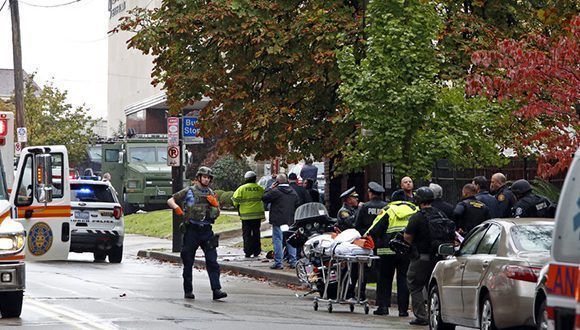
A SWAT team negotiated with the shooter, who in turn surrendered to the authorities. Photo: Gene J. Puskar / AP.
A heavily armed man has perpetrated a shooting inside a synagogue in Pittsburgh, Pennsylvania, before surrendering to the authorities. Eight people have been confirmed dead in the attack on the Tree of Life Jewish congregation in Squirrel Hill, where a strong police operation has taken place.
In addition, an unknown number of wounded are reported, including police officers who were shot during a confrontation with the suspect.
Police sources indicated that the gunman entered the religious center this Saturday morning while shouting, “All Jews must die.” The suspect opened fire both inside the facility and against officials who responded to the emergency call.
Initially it was reported that the man was in possession of an AK-47 machine gun, but officials later indicated that they believed it was actually an AR-15 rifle, as well as other smaller caliber weapons, NBC reports. Other media report that it also carried an alleged explosive device.
“Alert: There is an active shooter in the Wilkins and Shady area. Avoid the area,” the Pittsburgh Department of Public Safety said on Twitter.
It later transpired that a SWAT team negotiated with the shooter, who in turn turned himself in to the authorities. The suspect was injured as a result of the agents’ response, who had to use their vehicles as shields against the attacker’s armed reaction.
Officials have identified the suspect as Robert Bowers, 46, a well-known white supremacist in communities in the Network of neo-Nazis and far-right extremists, according to reports citing police audio recordings.
Some media reported alleged audios of officers who attended the scene. “The suspect talks about all these Jews having to die. We are still communicating with him,” an agent would have said. “The suspect talks about killing Jews. He doesn’t want any of them to live,” another policeman is quoted.
It transpired that at that time there was a Saturday service in different parts of the synagogue, and the version is handled that in the building there were almost one hundred people. The police claim to have received several calls from people barricaded inside the temple, and launched an evacuation operation.
The president of the United States, Donald Trump, pronounced on the matter. “There seem to be several dead. Beware of the active shooter. God bless everyone,” said the president.
On the other hand, Carnegie Mellon University, located near the Tree of Life religious center, is reported to have been closed and students were instructed not to leave the area.
(With information from RT)
Fear of Competition from RT (Russia Today)

Fear of Competition from RT (Russia Today)
———————————————————————————————————————————
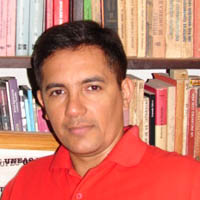 Author: Julio Martínez Molina | internet@granma.cu
Author: Julio Martínez Molina | internet@granma.cu
25 October 25, 2018
A CubaNews translation.
Edited by Walter Lippmann.
“The closure of RT by authorities in other countries is due to fear of competition,” Russian President Vladimir Putin said on Thursday, October 18, during the international discussion forum Valdái, which hosts Sochi.
Russia Today (RT) has been described since its inception, both in the United States and in some nations, as a “hostile foreign power” or “foreign agent on home soil. In fact, on July 17, it was announced that “the Australian Federal Police has opened a preliminary investigation into the chain as a suspected foreign agent.
The real sense of bitterness – or really fear or hatred – towards the Russian platform is that it is one of the few alternative voices charged with providing angles of analysis different from those provided by the mainstream American media. Organs that, no matter how “anti-Trump” they may seem, are part of the U.S.-owned corporate system.
RT represents one of the few media conglomerates on the planet (two others, bridging differences, would be Telesur in Caracas and Hispan TV in Tehran) that, without bowing to the dictates of the American empire, try to offer an objective global perspective of the local, regional and global political reality.
A balanced vision that weighs multipolar power and the sovereignty of peoples; a vision that deconstructs each deception perpetrated by the lie-repeating apparatus at the service of Washington, that gives voice to otherness and positions itself as an independent entity, cannot be well received by the Yankee powers and their European allies or clones.
The witch-hunt against the Russian station is yet another of the fronts of open war against Moscow, in the political, diplomatic and sports spheres…
Not even at the height of the Iron Curtain did American cinema and television produce as much volume of audiovisual material against Russia as they do today.
The order of the White House was and is to export that hatred. Not surprisingly, in 2016, a European Parliament report compared the “danger” of RussiaToday “with that of the Islamic State”.
The Western aversion to the progressive resurgence of the great Eurasian nation in its economic, military, scientific and communicational capacity is expressed in dissimilar ways. Attacking its website is not the least significant.
The increasing number of people who tune into the RT signal in the world puts the Western think tanks and their corporate media apparatus into a warning position. Thus, the rage against the Russian network is not only expressed in the organs of the United States, but also in a good part of the Europeans.
El País, the most read Spanish newspaper in the Spanish-speaking universe, has the challenge of the web as one of its obligatory daily tasks, along with the daily attack on Venezuela.
Korda’s Militia Woman

Korda’s Militia Woman
Granma today commemorates the 59th anniversary of the National Revolutionary Militias with the story of Idolka Sanchez, the militia face Korda immortalized with his lens in 1962.
—————————————————————————————————————————————–
Author: Alejandra García Elizalde | internet@granma.cu
October 25, 2018 21:10:37
A CubaNews translation.
Edited by Walter Lippmann.
In the crowd of that May 1, 1962, a young photographer focused on the still-adolescent face of Idolka Sánchez as she marched in front of the José Martí Memorial in Havana.
She, one of the nearly 2,000 militiawomen of the Lidia Doce women’s battalion, saw him approach, camera in hand. He didn’t seem to care about anything else. It was as if he had seen her from afar and didn’t want to let her go without obsessively capturing her image. He chose her.
“The man whose name, Korda, I had barely heard, was the same man who, in March 1960, had immortalized Che’s face with his mane in the wind, during the burial of the victims of the La Coubre terrorist attack. He ordered her to “put the machine gun up”. His order was followed by several clicks of his camera and, in a matter of seconds, she disappeared.
When she had forgotten the incident, he returned that same morning. Korda wanted to repeat two new shots. She did not want to capture just one face or one image. He was looking for a symbol, and he found it. The next day the photo went from one end of the island to the other on the cover of the Revolución newspaper.
“I felt an emotion that I cannot describe. It was not vanity, but eternal gratitude. I never thought about the transcendence of that image,” Idolka Sánchez Moreno told Granma.
Fifty-six years after that encounter with Korda, the image known as “La Miliciana” endures. The sun on her face, the severe look focused on the horizon, her embrace to the rifle that points to the sky, the beret tilted …
Today, Idolka preserves the late beauty of the 22-year-old girl who was in those early and intense times of Revolution. “I will never forget that it was a beautiful, clear morning, similar to today. I didn’t expect that it would attract the attention of any photographer, being surrounded by so many women. My main interest that day was the possibility of parading in front of the Commander in Chief,” she says.
It would take years for Idolka and Korda to meet again, after “La Miliciana” became an iconic image and adorned banners, postcards, photographic exhibitions, and appeared on the walls of workplaces and embassies. Few people know that she was the young woman in the photo.
“I remember one day, walking with my sister to work, a woman saw “La Miliciana” hanging in the window of an establishment. She, a few steps away, said, without knowing that we were listening: “Look at that, surely she left the country and yet they have her everywhere. My sister confronted her, but finally we decided to continue on our way.
She joined the Militias as soon as they were created: “I came from a family that supported every step of the revolutionaries through the Sierra, and my destiny could not be any other. I studied Law at the University, I have dedicated all my life to my country and today my two children are photographers”, remembers Idolka.
Almost two decades after that May Day, in 1981, he saw Korda again. Muchacha magazine arranged a reunion between him and “La Miliciana”.
“It was very emotional, but I never expected any recognition. That was his work. I was only an occasional model, discovered in the middle of the parade, one of so many young people who proudly wore the most beautiful of all the costumes, that of the militia.
From that meeting in front of Revolution Square on May 1, 1962, Korda once recalled that “I had been looking for hours with my camera in the crowd. The Lidia Doce women’s battalion attracted me and I captured many gestures. But in revealing only one was the indisputable one: the militia woman with the rifle held high and such a decision in her eyes that I said to myself: this is the Cuban warrior, the woman in the defense of the homeland.
Alberto Díaz Gutiérrez, better known as Alberto Korda (September 14, 1928-May 25, 2001), is one of the great photographers of all time, with a body of work that forms part of the symbolic imaginary of the Cuban Revolution.
“La Miliciana”, the instant that captured the purity and strength of women at an exceptional moment in national history, was one of his most beloved portraits. “It is a photo that will survive us,” said Korda. Future generations will admire our eternally young militia. And so it was.
In Defense of the North American Working Class

From Cuba:
In Defense of the North American Working Class
Trade unionists from the US will participate in the 12th International May Day Workshop.
 By Leyanis Infante Curbelo
By Leyanis Infante Curbelo
leyanis@juventudrebelde.cu
A CubaNews translation.
Edited by Walter Lippmann.
Last week, between April 23 and 26, the 12th International May First Workshop took place at the Palacio de los Torcedores, in the Cuban capital. It is an event organized by the Cuban History Institute (IHC) and the Central de Trabajadores del país (CTC) that brings together researchers, sociologists, historians, professors and trade unionists from various countries to exchange views on the current economic and political situation, and the role of workers and trade unions in the search for a global balance where relations of equity and social justice are paramount.

Willie Head, small farmer in South Georgia, veteran of many battles of black farmers to keep their land. Author: Maykel Espinosa Rodríguez Published: 02/05/2018 | 02:53 pm
As in previous editions of the event, many of the foreign participants are also part of the First of May Brigade, which at this time comes to the island to join the celebrations for the International Workers’ Day that we hold in Cuba.
This is the case with a group of trade unionists from the United States, mostly members of the Socialist Workers Party in that country. This May Day, they packed their backpacks and headed to the Plaza de la Revolución. They joined thousands and thousands of Havana residents in saluting the continuity of the Cuban Revolution. But a week ago, invited by the IHC, they shared, in a panel entitled From Clinton To Trump: How The Working People Of The United States Are Responding To The Anti-Worker Offensive Of The Bosses, their parties and their governments, their most vivid experiences in the struggle for class rights in the heart of the flagship country of world capitalism.
As a reflection of its social structure, this panel attempted to cover representatively the most disadvantaged and discriminated groups in its country: women, blacks and immigrants, and among them, members of those economic sectors that have been historically most oppressed and beaten, and who have therefore had to wage long struggles for their labor rights.
This is the case of Alyson Kennedy, a long-time coal mine worker and member of the first wave of women who broke the barriers that excluded them from jobs in underground mines. In the controversial 2016 U.S. election, she was a Socialist Workers Party presidential candidate.
Or Willie Head, a small farmer in South Georgia, veteran of many battles of black farmers to keep their land. Their struggle is part of a history that dates back more than a century and a half.
For these Americans, who defend the principle that a socialist revolution within their country’s capitalist system is possible, the Cuban Revolution represents the most concrete and current example of these aspirations.
In the opinion of Martín Koppel, journalist for the weekly El Militante, sharing these experiences in Cuba has been very important because, outside the United States in general, the situation of its workers and their struggles is not known; rather, the media conveys the idea that everything is fine with them.
Mary-Alice Waters, a member of the Political Bureau of the Socialist Workers Party, president of Pathfinder Publishing and organizer of the panel, told JR that the idea was to try to answer two main questions from each participant’s perspective: whether after Donald Trump came to power the working class that gave him his vote had also experienced a movement to the right; and whether it was actually possible for a social revolution to triumph in the United States.
On the first, Waters and the other panelists mentioned the teachers’ strike that has taken place in West Virginia recently and that has achieved a significant wage increase in this state’s public sector. Coincidentally, it’s one where Trump won with an overwhelming majority (68 percent) and where the unemployment rate is double the national average. The workers organize demands, she pointed out, because their situation has not improved at all.
In the recent history of our country, we have seen how the working class has waged its struggles at different times in our history and we have gained confidence in what it is capable of doing, said Waters. To illustrate, she mentioned the workers’ struggles of the 1930s, the mass struggle of Black people to overthrow the system of racial segregation in the 1960s, and the popular demonstrations against the Vient Nam war. All of them, she points out, have shown us how the class struggle does have the potential to change governments.
In his closing remarks of the XII International May Day Workshop, René González Barrios, President of the IHC, thanked the American delegation for its participation and affirmed that every time the American people become freer and more independent, the world will be too.
Voyage to the Israeli Hell of YAMAM
Voyage to the Israeli Hell of YAMAM

By Manuel E. Yepe
http://manuelyepe.wordpress.com/
Exclusive for the daily POR ESTO! of Merida, Mexico.
Translated and edited by Walter Lippmann.
On October 7, the American magazine Vanity Fair was awarded by the Tel Aviv regime with the exclusive right to a story about the Israeli special police force YAMAM. Today it one of the most sinister anti-terrorist units in the world because its repressive tactics have given it an unarguable prestige.
Under the signature of Adam Ciralsky, the publication included on October 7 a report entitled “From inside the most secret antiterrorist operation…”. The author relates his arrival at a fortified complex in the Ayalon Valley, between Jerusalem and Tel Aviv where YAMAM is headquartered.
That’s where a gang of anti-terrorist operatives, whose work for four decades has been shrouded in impenetrable secrecy. The journalist crossed through a uniformed Israeli border police combat post and entered an explosion-proof shed where his credentials were scanned, his electronic devices locked up, and a counterintelligence officer gave them a warning sermon.
“Don’t reveal our location,” “don’t remember our faces,” “forget our names,” and “try to forget everything you see,” were the basic instructions.
YAMAM is part of Israel’s national police. It is not subordinate to the Israeli army or Mossad (Israel’s CIA) or Shin Bet (Israel’s FBI). Its situation in Israel’s organization chart is more like Britain’s M.I.5, although recently the Israeli-Palestinian conflict has blurred some of the dividing lines between the tasks of these agencies. YAMAM’s main task, according to the hosts, is to thwart terrorist plans, engage with opposing militants during attacks, combat so-called crime syndicates and prevent border incursions
YAMAM is considered the most qualified agency of its kind in the West to confront a war of espionage. The organization has devised new methodologies to respond to terrorist incidents and mass shootings, which, until now, it only shared with a few of its politically-related counterparts around the world.
At a time when veterans of the so-called Islamic State or ISIS are attacking Western targets outside their strongholds in the Middle East, their expertise is in high demand. Increasingly, the world’s top intelligence and police chiefs are turning to YAMAM (the Hebrew acronym for “special police unit”).
Yet Israel, which, as an occupying power, faces international condemnation for its unequal war against the Palestinians, boasts that some senior government officials who are very critical of Israel on the world stage have begun to ask them for help with their most intractable security problems.
And now the Israeli regime has evidently felt that the time has come to share its experiences with other countries, for its own benefit of course.
The main objective assigned to YAMAM is to thwart terrorist plans against the government before they occur, to involve the military during attacks, to combat “crime syndicates” and to prevent border incursions. In contrast, the military forces are often called upon to confront protest demonstrations in the West Bank, using what human rights activists call exaggerated force.
But protests along the fence separating Israel from Gaza, said to be organized by Hamas, are met only by Israel Defense Forces (IDF) outside YAMAM. It is these IDF forces that are generally accused of killing unarmed Palestinians, according to Ciralsky,
When Hamas sends rockets or balloons carrying weapons to Israel, or when it launches rockets, it is the IDF that responds with devastating air strikes. Occasionally, members of YAMAM participate in these attacks, although to a large extent they play a secondary role.
For a year, the author and his team traveled to train and exchange tactics with their U.S., French and German counterparts in areas such as the retaking of passenger trains, frustrating suicide attacks, and disarming men armed with grenades or bombs.
YAMAM’s technology includes robots and drones, and dazzles the uninitiated. But so do the statistics: YAMAM performs an average of about 300 missions a year in which its commandos have prevented the explosion of no less than 50 “time bombs” carried by suicide bombers en route to their targets and hundreds of other attacks in early stages.
YAMAM is a lamentable manifestation of the most modern technology designed as part of the Israeli genocide against Palestine, a nation whose people legitimately aspire to their sovereign space.
October 25, 2018.
This article may be reproduced by quoting the periodical POR ESTO! of Merida, Mexico.
Alyson Kennedy: A Voice for the Excluded

Alyson Kennedy: A Voice for the Excluded
Almost everyone believes that only two parties, the Democratic and the Republican, participate in the U.S. presidential election, but others persist in carrying a different class view even though the system invisiblizes them.
Posted: Saturday 07 May 2016 | 08:43:03 pm. Updated: Friday 22 September 2017 | 12:03:16 am.

By Juana Carrasco Martín
juana@juventudrebelde.cu
A CubaNews translation.
Edited by Walter Lippmann.
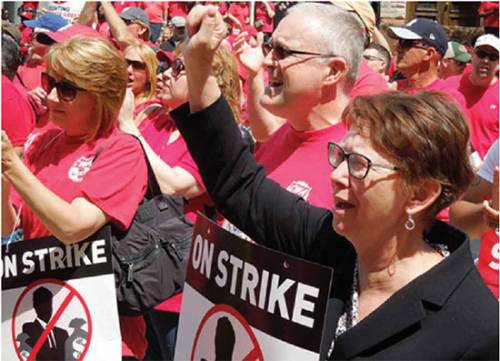
The socialist leader at a rally of striking Verizon workers in Treton. Author: Tony Lane/ Militant Published: 21/09/2017 | 06:31 pm
The electoral campaign in the United States is reaching its climax in the selection of candidates by the two big parties. It’s a system that hides behind the spectacle their supposedly being defenders of the same interest, that of big capital, of the world of finance, of the arms industry, of the polluting sectors of the earth’s climate, of the exploiters of the workers of the courtyard and of the wealth and goods produced by professionals, workers and peasants in a good part of the world, where the transnationals of the empire plunder and intervene.
However, made invisible by the media that are part of the show, there are small parties, not infrequently persecuted, ignored, and excluded, that take the real interests of the working people to the streets and to the ballot boxes where it is possible to reach these workers.
A woman, small in her physique, with an easy smile, and simple words, convincing and firm, is the bearer of that other face, which is not exactly of the same coin. On the contrary, she reveals and denounces what actually happens in the United States this 2016.
Alyson Kennedy is a presidential candidate for the Socialist Worker Party (SWP), on whose ticked she is accompanied by Osborne Hart, a decision announced last February 12.
She doesn’t do it from the outside, nor from the theory of class struggle. Today, Alyson Kennedy is a Chicago worker in the textile garment industry at Walmart, the world’s largest chain of retail stores, denounced in many countries for the exploitative conditions to which it subjects its workers and employees.
“That’s why I, as a candidate for the Socialist Workers Party, and my running mate, Osborne Hart, and the other candidates for the Senate and other positions have been getting a good reception among the workers, because we are open to discussing a revolutionary perspective,” she says.
“The workers know that they are being exploited, they know what is happening in the country and in the world,” says Alyson Kennedy, who points out that one of the aspects on which they give their views in this electoral campaign is to oppose U.S. participation in the Middle East. “And many workers are also open to hearing about the Cuban Revolution,” he adds.
She mentioned Cuba, what motivated her presence in our country, coinciding with the May Day celebrations?
I came to Cuba as part of a delegation of women workers who are fighting against police brutality, of which I have also been a victim, in the city where I live, Chicago.
“This is my first time in Cuba, although I know a lot about the island, my party does educational work on Cuba and for many years we fought for the freedom of the Five and we do educational work on the need to end the embargo (blockade).
“In spite of the short time I have been here I have been able to see the country concretely, and that will help me a lot to be able to explain to the workers there why Cuba is an example for us. If Cuba was able to create a Revolution and create a society that addresses the needs of the workers, we can do it in the United States as well,” emphasizes the socialist leader.
The reasons for seeing this possibility clearly and surely explains it: “We have a history of struggle also in the United States. The workers of the United States must become aware of what they have achieved through the struggle. We must realize the power we have and our own worth.
She closes her words to the readers of Juventud Rebelde with this committment:
“I want you to know, that we are back to redouble our efforts in the fight against the blockade, for the return of the occupied territory in Guantánamo, which is Cuban, and having been here helps us to realize why it is necessary to continue in the battle for our rights.
=================
Printed version in Spanish:
http://www.juventudrebelde.cu/internacionales/2016-05-07/alyson-kennedy-una-voz-por-los-excluidos/imprimir
PDF of the original also available
The challenge of assuming a new concept

The challenge of assuming a new concept
Marriage has been consolidated as a charter of social and citizen protection that guarantees numerous possibilities. It establishes limits, roles and rights between people, towards them and from them towards the State. The formulation of the article in the Draft Magna Carta has generated controversy. The aim is to break down stereotypes and avoid any form of discrimination.
 By Ana María Domínguez Cruz
By Ana María Domínguez Cruz
digital@juventudrebelde.cu
and
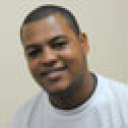 Yuniel Labacena Romero
Yuniel Labacena Romero
yuniel@juventudrebelde.cu
Posted: Saturday 20 October 2018 | 10:04:22 pm.
A CubaNews translation.
Edited by Walter Lippmann.
DIALOGUE:
So, I don’t agree with Article 68.
Aren’t we in the 21st Century?
Or are we still stuck in the 19th Century?
Love. That is the fundamental reason why two people decide to unite their lives and the basis on which, if they wish, they form a family. Legalizing this union or not is not the most important thing, some think, and jurists insist on the need to value marriage as a legal institution, guarantor of rights for those involved.
Cuba proposes in its Draft Constitution, specifically in article 68, that marriage is the voluntarily agreed upon union between two persons with the legal capacity to do so, in order to make a life in common…, which gives way to the possibility of equal marriage, and it is logical that controversy is awakened in the debates.
As Homero Acosta Álvarez, Secretary of the Council of State, recently pointed out at, the inauguration of the International Congress of Lawyers 2018, today’s draft was confronted with the choice of maintaining the concept of marriage as constitutional (a content barely regulated in the constitutions) or moving away from that and leaving its [further] development to the law.
“It was decided to maintain this configuration and to assume the challenge of the new concept, knowing that its inclusion could generate disagreements, due to cultural reasons, prejudices and stereotyped visions, these are not transformed overnight,” said the member of the Commission responsible for constitutional reform.
“If the Constitution proclaims broad recognition of the right to equality, why should it limit people of different sexual orientations from getting married? It will have to follow this concept anchored in visions already overcome by time or it will have to be modified and recognized as a right, as is gradually happening at the planetary level.
“The positions in front of this regulation are those who prefer to maintain the concept of the current Constitution; those who favor the current proposal in the Project; those who accept the civil recognition of de facto couples and not marriage. There are others who agree, but limit the right to adoption and, finally, some advocate the concept of “two or more persons”. In short, a diversity of criteria that have to be evaluated like others with the rigor and depth that is required,” he said.
A wonderful way to start thinking
Lilian, divorced and with two children, also agreed with the ideas explained by the Secretary of the Council of State. She thinks this variation of the concept of marriage is a wonderful way to begin to think. “Each person has the absolute freedom to love another and the most important thing is that affection takes precedence in that relationship. If it is a couple of the same sex, love is still the most important thing. And if now there is the possibility that the legal protection of their rights is guaranteed, it’s better.
She refers at this point to the fact that there are still those who believe that homosexuality is a disease, synonymous with promiscuity, brazenness and few moral values. “We are happy to the extent that we can live fully, without hypocrisy and without maintaining appearances. This is a step forward from the social and the cultural. We have to recognize love, and I see it as just,” she says.
For his part, Mario Román -who has lived with René Miguel for four years- values positively that these guarantees are believed, even when they aren’t interested in getting married. “Relationships have the same value. The same rights must be guaranteed for everyone, and marriage is that necessary justice when one of the two is missing, the other has legal protection. Cuba has always fought for equality and we cannot allow people’s sexual orientation to be a cause for discrimination,” he says.
Marta Emilia still remembers with sadness what happened in her neighborhood when Angel died. “We all knew that Victor was his partner for more than 15 years and that Angel’s family always turned their back on him because of his choice. Not even when he was hospitalized did anyone come, much less when Victor spent more than a year taking care of him at home. But when Angel died, nephews and cousins showed up to take the house and Victor was left homeless. That was wrong and I hope those stories won’t happen again.
==
According to Rafael, another interviewee, “our society is not prepared for this modification of the concept of marriage. Therefore, we must defend the ”original design of the family” and what the current Constitution states,” he says. “We have to think about the new generation, when they see two men or two women holding hands, in the street or kissing. That was always frowned upon and I still see it the same way,” he says.
From the poll carried out by this newspaper and from the comments left on our web edition, other criteria also emerge against it: the negative effects on the birth rate, the transformation of the traditional family model, the problem of adoption and the world’s own cosmovision. While these reasons are used in disagreement with what is stipulated in article 68, others believe that it is not possible to try to prohibit a decision of a personal nature.
Katia, married for the second time, says that the myth that having a child in a homoparental home will lead to homosexuality must be banished. “Those who today have relations with people of the same sex did not learn it in their homes, where they lived with their father and mother. Besides, that’s not the issue the constitutional reform is talking about; there’s no need to mix things up,” she says.
And Felicia says our society has yet to go through the necessary transformations in its thinking. “Even in the treatment of men towards women we lack much. It’s enough to listen to some flirtations compliments that become offensive. Tolerance is not the concept, but acceptance and respect for coexistence among all.
Necessary progress
Julio César González Pagés, who holds a doctorate in historical sciences, recognizes that, one hundred years after the approval of the Divorce Law in Cuba, which was very controversial, it is magnificent that this good news arrives. “The country is placed in a position of advancement, because it is something that is closely related to human rights. On a global level, very few countries have endorsed this in their Constitutions, which is why Cuba would be among the few that grant that right.
“First and foremost, the concept of respect for the equal rights of all must prevail. It is not a question of imposing oneself, but of dialoguing among all and contributing to a full education among citizens. It is praiseworthy that, in a nation where homophobic thought was deep-rooted, it now there is a determination that this does not happen again and that we are seeing ourselves as an inclusive society.
“It is also important to stress that this is not just a right for lesbian, gay, bisexual, transgender and intersex (LGBTI) people, but for everyone, because it is the respect that we have for all rights. It is not a question of all people rushing out to get married, because many, homosexual or heterosexual, are not interested in formalizing their relationship in this way at this time, but the existence of the right is the essential thing”, he points out.
The modification reflected in article 68 – which departs from heteronormativity and machismo – is in line with the Conceptualization of the Cuban economic and social model of socialist development. This defines as principles that sustain the model and its main transformations respect for diversity and confronting all forms of discrimination due to skin color, gender, gender identity and sexual orientation.
It is praiseworthy that in a nation where there was a deep-rooted homophobic thought, it is now demonstrated that there is a will that this not happen again and that we are seen as an inclusive society.
It is also due to a culture of rights and social justice that the Cuban Revolution has promoted. It has has won for its citizens what in many nations are unthinkable guarantees, such as safe, legal and free abortion; equal pay for equal work for women and men; maternity and paternity leave; family planning services; sex education in school…
But there are more elements. In the words of the advisor of the Ibero-American and African Network of Masculinities, this is related “to the policy carried out by the country from the campaigns carried out against homophobia and transphobia. Legislation shows that educational and awareness-raising campaigns in respect to free and responsible sexual orientation and gender identity work if there is the political will of the country and the movement of people.
González Pagés warns that there is lots of opposition from groups of people who only see the couple as a means for reproduction or who only accept the family scheme of decades ago, made up of mother, father and children. “They do not understand that the family today includes grandparents, uncles, single mothers, among other archetypes, and that the legalization of a union does not necessarily entail having children.
“This process must not lead to aggressions, offenses or impositions. All processes have people in favor and others in disagreement, which are also included. But in the end, the logic of an educated, educated, highly literate country will mean reason will prevail, as has happened with other laws.
“The new rights of the 21st century cannot frighten us. We are not a backward-looking country because part of the population disagrees, on the contrary. The difference exists and what it is about is to argue, to convince, to dialogue and in no case to impose by force”.
The specialist recalls that Cuba has always been an advanced country, with controversies and confrontations regarding many issues, such as racial and gender discrimination. “Every movement generates these reactions and you have to be prepared for that. Some believe the birth rate will fall in the country because they think this is a process of proselytism in favor of marriage between people of the same sex, but that’s a mistake, it is not so.
“It is a question of legalizing unions that already exist, and so that people do not feel unprotected,” warns the specialist, who assures us that he is proud that “our Draft Constitution is advanced and revolutionary, among other reasons for making this modification. It shows we have a society with all and for the good of all, as is embodied in the Preamble to the Draft Constitution.”
Useful legality
According to the study Deconstructing Myths about Same-Gender Couples from the National Center for Sex Education (Cenesex), the scarce work carried out in the country denotes the existence of similar characteristics among families made up of heterosexuals and homosexuals (commitment, capacity to resolve conflicts, distribution of roles and functions, shared feelings and intimacy, among other indicators).
====
The criteria shared by the interviewees with whom this newspaper spoke, as well as article 68, are in line with other postulates of the Draft Constitution, particularly article 40. It states that “all persons are equal before the law, are subject to equal duties, receive the same protection and treatment from the authorities and enjoy the same rights, freedoms and opportunities, without any discrimination for reasons of sex, gender, sexual orientation, gender identity, ethnic origin, skin color, religious belief, disability, national origin or any other distinction injurious to human dignity”.
Perhaps for this reason, Gina, who has been together with Dania for three years, will not rush to a law firm to legalize her union. “We are not interested in getting married, but it is a right, a protection, an option for those who need it in their life history; and that our Constitution, like others in the world, includes it, has great value”.
Another of the interviewees tells us: “The stigmata and social schemes must crumble, because the treatment between people is sometimes hostile, unjustly. It is not necessary to hide if you love someone and acting cleanly is what favors peaceful coexistence. When ten years pass, we will be able to analyze what has happened on the island and if the taboo persists, but legally recognizing what already exists is a step forward.
Law cannot remain a perpetual slave of social backwardness, even though at some point it may collide with part of the social spectrum. In its transforming mission, it is also responsible for promoting development.
In this sense, Olga Mesa Castillo, Doctor of Juridical Sciences, titular professor and consultant to the Faculty of Law of the University of Havana, remembers that since the promulgation, in 1975, of the Family Code as an independent legal text of the Civil Code, our country was ahead in regulating institutions such as that of civil marriage. We did so in a liberating manner, stripping it of the requirement of physical-sexual capacity; of divorce for just cause, and without guilt; and with a special regulation on de facto union, equating it with civil marriage.
Furthermore, the President of the Cuban Society of Civil and Family Law, of the National Union of Jurists of Cuba, comments that the protection of concubinage was also introduced, and the country was a pioneer in including in its 1940 Constitution the equalization of de facto union with civil marriage.
“Marriage in Cuba today is a voluntary union, without a contractual, legal or business sense, and is not exempt from duties and rights. It is legislated that upon the death of one of the members of the couple, the one who survives is protected by law for the enjoyment of some economic or material benefits,” he says.
The National Law Prize winner regrets that, in a general sense, the population has not worried about knowing about legality and worse still, that many have decided to live outside it, not only concerning marriage but also paternity.
“Marriage means that you are fortunate enough to have a person in your life who also protects you from a material point of view. As a consensual union, there are already same-sex couples who live together and if they want to formalize it before the law, I see no problem in that. On the contrary, problems arise if you want to resort to the law when there is no remedy.
The incorporation of a broader concept of marriage is only the first step on the road to the approval of a new Constitution that will ensure greater legal guarantees for the specific LGBTI population. As Mariela Castro Espín, director of Cenesex, has warned, article 68 is not about taking away the rights of heterosexual couples, but about giving them to those who had been denied them.
Homero Acosta Álvarez recalled: “This is not the first time we have faced these challenges. Let us remember in history the conflicts to recognize women’s right to vote or the establishment of divorce or, in our case, to incorporate the equality of rights between men and women and the equal responsibility of spouses, according to our Family Code.
“In our opinion, Law cannot remain a perpetual slave of social backwardness, even though at some point it may collide with part of the social spectrum. In its transforming mission, it must also promote development,” he said.
“I ask the world to do something for us”.

“I ask the world to do something for us.”
Nadia Murad won the Nobel Peace Prize 2018 for her fight against the rape of women in war contexts.
Author: Ana Laura Palomino García | internet@granma.cu
October 23, 2018 20:10:41
A CubaNews translation. Edited by Walter Lippmann.
“My pain is like a hundred deaths. I sadly sentenced a 14-year-old girl to BBC MUNDO, after living such a traumatic experience as being a sex slave.
My words do not find the way to express in prose so much pain. Her phrase, however, reminds me that her story is multiplied into others, to the shame of humanity.
Nadia Murad won the Nobel Peace Prize 2018 and understands very well the sorrow of this young woman. The recognition is undoubtedly an honor, but this woman bears the cross of having been a sexual slave of the terrorist group Islamic State (IS). Since then, her struggle has not ceased, and she travels the world as an activist against the rape of women in contexts of war.
When collecting the award I remembered that “thousands of women are still imprisoned in the hands of IS mercenaries.” For this reason, “my survival is based on defending the rights of persecuted communities and victims of sexual violence. One prize and one person cannot do it. We need an international response,” she told the Spanish daily El País.
Murad is part of Yazidism, a minority religion that dates back to 2000 B.C. and has its origins in the teachings of Iranian prophet and reformer Zoroastro.
This group within Iraq has been persecuted and its members forced to convert to Islam, or die at the hands of terrorists.
It was from the year 2014, when the Islamic State began the extermination against the Yazidis and Shiites, using all kinds of vexations against them.
The beginning of the end
Nadia’s nightmare began on a normal day, in that place she called home, when IS terrorists came to her village in Iraq and killed most of the men while women under the age of 45 were kidnapped, she confessed to the BBC.
Murad suffered the same fate as almost all of these young women. They were already in the hands of the terrorists and at night the sale of the girls began among the IS terrorists, most of them to be sexually enslaved. This inhumane practice is part of the propaganda to attract more followers to the organization.
“They began to walk around the room, looking at us, while we shouted and asked for compassion. They surrounded the prettiest girls and asked them: “How old are you? They looked at their mouths and their hair. They are all virgins, aren’t they? they asked the guard, who nodded and said, “Of course, like a merchant proud of his products,” Murad recalls sadly for El Diario.
After living hard experiences, she managed to flee from her captors and began a fight without rest, at the risk of her own safety.
This battle, as she repeats in each of her speeches, will not cease until the creation of a specialized tribunal to try those responsible for the crimes committed by terrorists in Syria and Iraq.
Your mission: the freedom of a people
Murad tries to make the world aware of what’s going on with her people. She tells her story over and over again. She does everything she can because her experience is not lived by another adolescent or girl, neither in Iraq nor anywhere else in the world.
The self-proclaimed Islamic State has destroyed the lives of some 3,000 Yazidi girls and women, according to El País newspaper. Raped, locked up and sold as simple objects, they try to recover their souls when they manage to escape from their kidnappers.
I will be the last. The history of my captivity and my struggle against the Islamic State is a book written by Murad as a testimony of her experiences. In this way, she aims to reach a wider audience and raise awareness.
She has travelled to different countries in order to meet with the leaders of those nations. However, the response has not been as expected and, while world leaders make a decision, there are still girls and women being kidnapped.
Nadia has urged the international community to “work together with the determination to show that genocidal campaigns will not only fail, but will also hold perpetrators accountable and that there will also be justice for survivors.
But the world becomes blind to these problems. Perhaps this is because there are others that are considered “more important,” such as economic crises or political conflicts between great world powers. Meanwhile, wars, violence and the pains they cause continue waiting for a common effort, for human sensitivity, so that stories like those of Nadia and the thousands of girls turned into sexual slaves are not repeated and we never have to listen again: “I ask the world to do something for us”.
| M | T | W | T | F | S | S |
|---|---|---|---|---|---|---|
| 1 | 2 | 3 | 4 | 5 | 6 | |
| 7 | 8 | 9 | 10 | 11 | 12 | 13 |
| 14 | 15 | 16 | 17 | 18 | 19 | 20 |
| 21 | 22 | 23 | 24 | 25 | 26 | 27 |
| 28 | 29 | 30 | ||||

